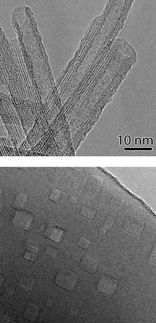NREL research advances hydrogen production efforts
Advertisement
Researchers at the Energy Department's National renewable energy Laboratory (NREL) have made advances toward affordable photoelectrochemical (PEC) production of hydrogen.
NREL's scientists took a different approach to the PEC process, which uses solar energy to split water into hydrogen and oxygen. The process requires special semiconductors, the PEC materials and catalysts to split the water. Previous work used precious metals such as platinum, ruthenium and iridium as catalysts attached to the semiconductors. A large-scale commercial effort using those precious metals wouldn't be cost-effective, however.
The use of cheaper molecular catalysts instead of precious metals has been proposed, but these have encountered issues with stability, and were found to have a lifespan shorter than the metal-based catalysts.
Instead, the NREL researchers decided to examine molecular catalysts outside of the liquid solution they are normally studied in to see if they could attach the catalyst directly onto the surface of the semiconductor. They were able to put a layer of titanium dioxide (TiO2) on the surface of the semiconductor and bond the molecular catalyst to the TiO2.
Their work showed molecular catalysts can be as highly active as the precious metal-based catalysts.
Turner points out that although the molecular catalysts aren't as stable as the metal-based catalysts, PEC systems are shut down each evening as the sun sets. That leaves time to regenerate a molecular catalyst.
"Hopefully you would not have to do that every day, but it does point to the fact that low stability but highly active catalysts could be viable candidates as a long-term solution to the scalability issue for PEC water splitting systems," Turner said.



























































